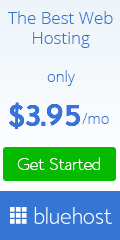There is a lot of information online that can help you upgrade and improve your business. You need to access various types of websites for this information. Some websites may deny you access based on your location or because they suspect you have malicious intentions.
You can beat such restrictions by browsing using proxies. Proxies protect your identity online by concealing your IP address and presenting its IP instead. As a result, any website that had put in place systems to deny you access can’t block you since they can’t identify you.
Not everyone, however, uses proxies for data mining for their businesses. Some use them for privacy, anonymity, and cybersecurity, among other uses.
Various types of proxies have, therefore, been developed to cater to each of these tasks. Each category has features that make it suitable for one purpose and not so ideal for other tasks.
Proxies can, therefore, be put in different categories depending on the criteria used.

Table of Contents
1. Based On The Origin Of The Proxy’s IP
a. What is a residential proxy?
Internet service providers assign an IP address to all their customers. The IP address for each device used to access the internet is unique and can be used to identify the browser location.
Companies that provide proxy services often reach out to individuals asking them to allow them to use their IP addresses for proxies. This is, of course, at a fee.
If they agree, the ISP-provided IP address is allocated to proxies that clients can use to access websites. These are called residential proxies.
When you use a residential proxy, you are using someone’s IP address. Therefore, websites and other programs perceive your device to be browsing from that person’s residential address.
Residential proxies are divided into:
Rotating residential proxies: IP address changes at regular intervals. You negotiate with the service provider on how often you want the IP to change.
Static residential proxies: You use the same IP address for an extended period. They are much faster than rotating proxies yet still as secure and reliable.
b. What is a data center proxy?
For this type of proxies, the IP address comes from data centers. The data centers, in this case, are servers dedicated to the administration and management of proxies. Due to the specialized software and broad bandwidth of these servers, data center proxies are fast.
This makes them ideal for use for tasks that use bots such as web crawling. Proxies for sneakers are mostly data center proxies.
Unfortunately, some sites also identify data center proxies based on the speed of the traffic. For example, a real person would take a few seconds or minutes to buy an item from a site. But a sneaker bot using data center proxies can make the same transaction in microseconds.
When some sites note such speeds, they block the IP address for bot-like activities. This makes data center proxies less reliable for such tasks.
Date center proxies are further divided into Secure socket Proxy (SOCKS) and Hypertext transfer protocol (HTTP) proxies.

2. Based On The Protocol Used
a. What is an HTTP proxy?
You’ve probably noticed many URLs have an HTTP portion. This means that the site uses the hypertext transfer (HTTP) protocol.
This protocol works such that your browser sends a request to the website’s server in the form of a URL. The server then processes the request and responds with the information you requested.
Usually, the traffic is direct. But for your online privacy, you can add a proxy that uses the HTTP protocol as an intermediary between your browser and the site’s server.
HTTP proxies are more ideal for browsing the internet. Most proxies are, therefore, HTTP proxies.
b. What is a SOCKS proxy?
These proxies use the Secure Socket (SOCKS) protocol. With HTTP proxies, the website server must also be using the HTTP protocol for it to form a successful connection. This is a limiting factor in HTTPS proxies.
SOCKS proxies, on the other hand, can form a connection with various types of network protocols. They are, therefore, more flexible and versatile.
The main disadvantage with SOCKS proxies, however, is this. They do not secure your traffic data as it is being transmitted between your device’s browser and the website.
Final words
Proxies can be divided based on a variety of criteria. For instance, you can categorize them based on the level of anonymity, the usage method, the duration you can use one IP, etc.
These criteria, however, result in too many and fragmented groups of proxies. Some of the resultant groups can be categorized under some of the groups discussed above.
The criteria we have used above gives you a broad classification of proxies. You can delve into each category individual for more details and further kind.
Professional proxy-providing sites have knowledgeable and capable customer service providers that can offer you clarification where you may be confused.
Tech India Today
Related posts
Recent Posts
- How Important is Competitor Analysis? November 13, 2023
- Securing the Internet of Things: A Growing Concern October 2, 2023
- When DevSecOps Shines: Reinventing Software Development May 17, 2023
- Implementing Infrastructure As Code (IaC) With DevOps April 21, 2023
- What Can You Gain By Choosing a Reputable HVAC Software Solution? March 19, 2023
Categories
- Artificial Intelligence (AI) (18)
- Augmented Reality (AR) (5)
- Automotive (7)
- Blockchain (2)
- Business (45)
- Career (4)
- Cloud Computing (6)
- Computers (4)
- Content Management System (1)
- Cryptocurrency (1)
- Cybersecurity (7)
- Data Science (1)
- Digital Marketing (32)
- E-commerce (1)
- Education (6)
- Electronics & Hardware (10)
- Entertainment (5)
- Finance (9)
- Gadgets (23)
- Games (3)
- HTTP (3)
- Industry (2)
- Infographics (3)
- Internet (138)
- Internet of Things (IoT) (22)
- Job (3)
- Lifestyle (2)
- Machine Learning (7)
- Marketing (45)
- Marketplace (2)
- Mobile Apps (20)
- Natural Language Processing (2)
- Network (15)
- News & Trends (15)
- Operating System (OS) (6)
- Programming (10)
- Robotic Process Automation (RPA) (13)
- Security (19)
- SEO (24)
- Social Media (29)
- Software (35)
- Tech India Today (1)
- Technology (166)
- Virtual Reality (VR) (2)
- Web Apps (12)
- WordPress (1)
- Workflow (2)
- Workforce (2)
- Workplace (1)
- Workspace (1)

